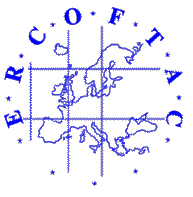 |
 |
 |
|
| Institute of Thermomechanics AS CR, v.v.i. | CTU in Prague Faculty of Mech. Engineering Dept. Tech. Mathematics | MIO Université du Sud Toulon Var - AMU - CNRS - IRD | Czech Pilot centre ERCOFTAC |
| Neural Network Fluxes in Complex Human Behaviour | |
| C. Leyton, J. M. Redondo, A. Tarquis | |
Abstract: | |
| The scale effects on nonlinear human fluxes are similar to those in turbulent transport complex parametrizations that need both, spatial and temporal scales of different size to be understood. We compare the different possibilities of derivation of patients within a fixed speciality towards all other hospitals of the same network. The reference of users within the public health network in a delimited special region of are believed to serve as a reference to guide future health interventions aimed at reducing gaps of inequality among patients. This study uses analogies with fluid examples, it is important also to include many other, measurable, factors such as distance between centres, travel facilities, road quality, the perceived satisfaction, the technological level, etc. In order to take into account that the process is not linear, so the situation calls for more advanced turbulence research methods derived for multi scale fluxes, in a turbulence and chaotic type of scenario. The fractal methodology may be also used for different physical size scales. The additional complexity of human choice provides another source of nonlinear behaviour, to be added to the measurable objective data. As a first step we have applied a direct observation methodology to find derivation indexes associated to the specialities within centres of health of different size. The most vulnerable sectors are seen to be located on the periphery. Network Analysis is analyses organisations focusing on relationships as the most important aspect. Here we discuss visualisation techniques used in turbulent fluxes for Social Network Analysis, including spring-embedding and simulated annealing techniques. We introduce visualisation techniques based on Kohonen neural networks, and also introduce social flow diagrams to relate different forms of conceptual distance. Analysing Kohonen's self-organizing feature maps we presented a method using a system of energy functions, one energy function for each processing unit. It is shown that the training process, like in mixing flows, is equivalent to minimizing each energy function subject to constraints. The analysis is used to prove the formation of topologically correct maps when the inherent dimensionality of the input patterns matches that of the network. The energy equations can be used to compute the steady-state weight values of the network, in an accident or in case of epidemic conditions, patient transport behaves as a front. In addition, the analysis allows bounds on the parameters to be used, and examples of fluxes are presented to show the behaviour of the network. | |
Keywords: | |
| index number, derivation, nonlinear process, turbulent transport, public health and care network, darcy Law, Kohonen network maps, fractals | |
| Fulltext: PDF DOI: https://doi.org/10.14311/TPFM.2018.025 | |
| In Proceedings Topical Problems of Fluid Mechanics 2018, Prague, 2018 Edited by David Šimurda and Tomáš Bodnár, pp. 191-196ISBN 978-80-87012-65-9 (Print)ISSN 2336-5781 (Print) | |
 Login
Login Powered by
Imce 3.0 © 2014, Pavel Formánek, Institute of Thermomechanics AS CR, v.v.i. [generated: 0.5252s]
Powered by
Imce 3.0 © 2014, Pavel Formánek, Institute of Thermomechanics AS CR, v.v.i. [generated: 0.5252s]